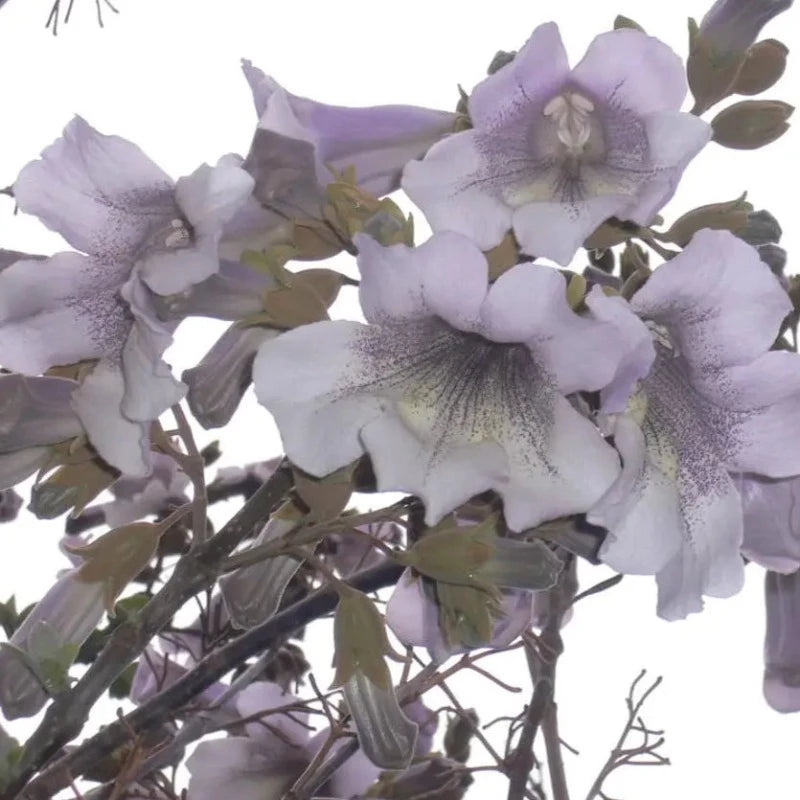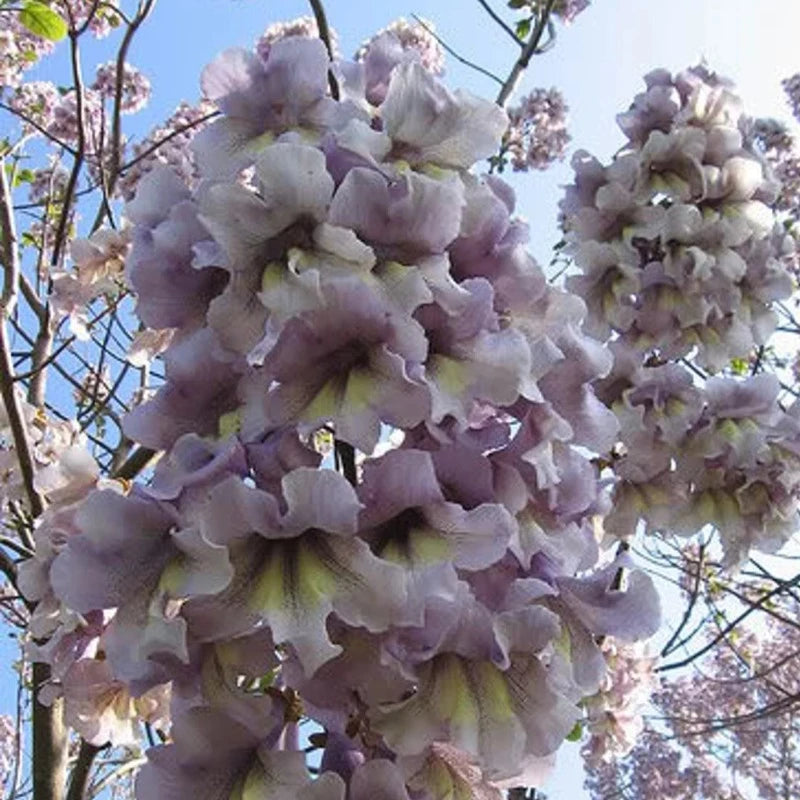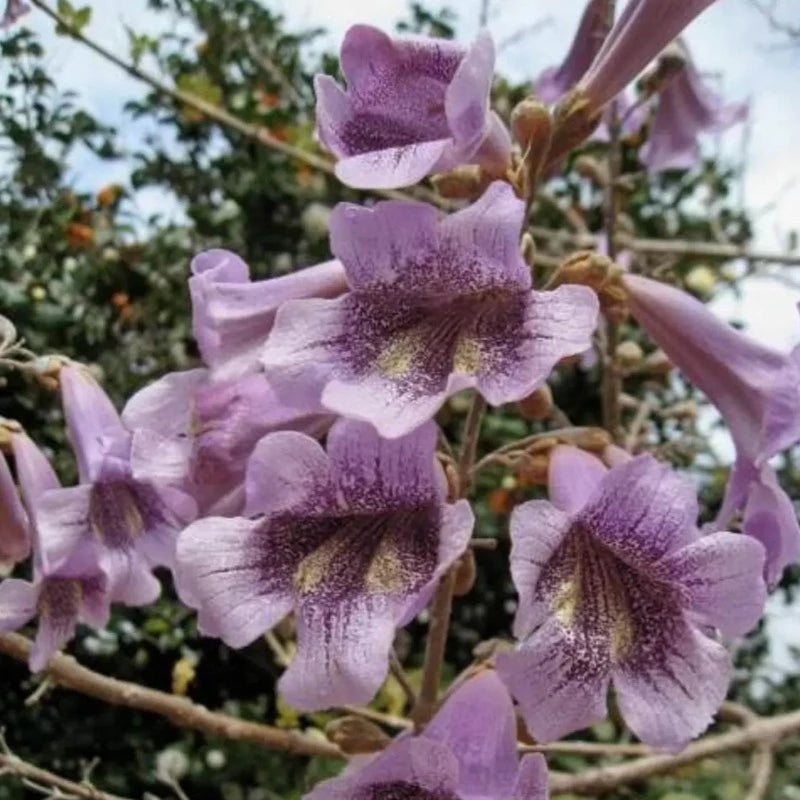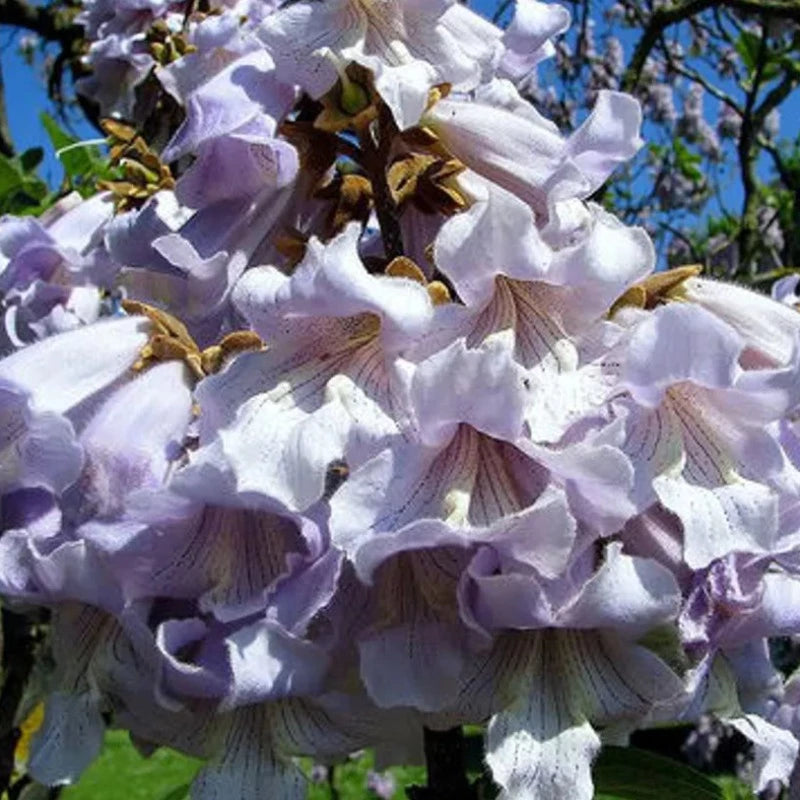- Historical context: The Royal Paulownia, also known as the Empress Tree, has a rich history dating back to ancient China, where it was highly valued for its fast growth and beautiful flowers.
- Geographical origination: The tree is native to central and western China.
- Relevant cultural significance: In Chinese culture, the Paulownia tree is often associated with prosperity and good fortune. It is also traditionally planted when a daughter is born, and the wood is used to make a dowry chest when she marries.
- Time period of discovery: The tree has been known and cultivated for thousands of years in China, but it was introduced to Europe and North America in the 19th century.
- Original habitat: Paulownia trees thrive in the temperate regions of China, particularly in areas with well-drained soils and ample sunlight.
- Notable historical uses: Historically, the wood of the Paulownia tree has been used for making musical instruments, furniture, and even lightweight boats due to its strength and lightness.
- Ideal temperature range: Paulownia trees prefer a temperature range of 15-30°C (59-86°F).
- Soil type: They thrive in well-drained, fertile soils with a pH range of 5.5 to 7.5.
- Sunlight requirements: Full sun is ideal for optimal growth, although they can tolerate partial shade.
- Watering needs: Regular watering is essential, especially during the first few years of growth. However, the soil should not be waterlogged.
- Planting season: Spring is the best time to plant Paulownia seeds or saplings.
- Germination time: Seeds typically germinate within 2-3 weeks under optimal conditions.
- Growth cycle duration: Paulownia trees are known for their rapid growth, often reaching maturity within 10-15 years.
- Common pests and diseases: Common issues include root rot, leaf spot, and infestations by caterpillars and beetles.
- Companion planting advice: Paulownia trees can be planted alongside nitrogen-fixing plants like clover to improve soil fertility.
- Common challenges and solutions: One common challenge is ensuring adequate water without causing root rot. Proper drainage and careful watering practices can mitigate this issue.
- Nutritional values: While the seeds themselves are not typically consumed, the flowers can be used in some culinary applications.
- Health benefits: The tree has been used in traditional Chinese medicine for its purported anti-inflammatory and antimicrobial properties.
- Culinary uses: Paulownia flowers can be used in salads and as a garnish.
- Medicinal uses: Extracts from the tree have been used in traditional remedies for conditions such as bronchitis and asthma.
- Other unique advantages: The wood of the Paulownia tree is highly valued for its lightweight and durable properties, making it ideal for furniture and musical instruments. Additionally, the tree is known for its ability to sequester carbon, making it beneficial for environmental conservation efforts.










